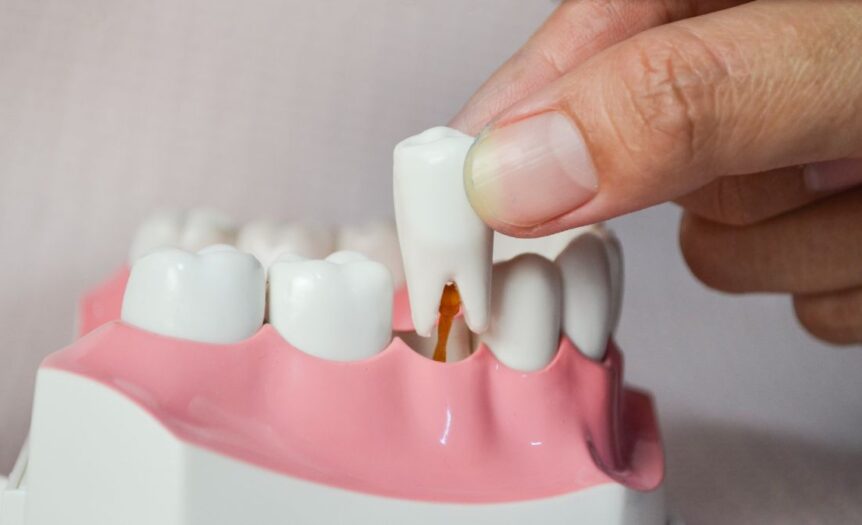Not knowing what to eat following your tooth extraction is a common concern that patients of all ages have. Learn more about proper diets for all stages of your recovery process!
The First Day
The first 24 hours are particularly crucial in setting the tone for a speedy and successful healing process. During this period, you must stick to a diet of liquids and soft foods that require minimal chewing. Applesauce is a great choice—it’s gentle on the oral cavity, easy to eat, and provides essential nutrients. Soups, preferably lukewarm or at room temperature, nourish the extraction site without causing discomfort or irritation.
In addition to applesauce and soup, other soft foods like yogurt, ice cream, and pudding are comforting and easy to consume. These foods are gentle on your mouth and provide a cooling effect that can reduce swelling and discomfort. However, resist the urge to swirl these foods around in your mouth, as that often damages oral clots that form in the extraction area. Crunchy foods are a definite no-go during this initial stage. They cause unnecessary strain and potential damage to the sensitive extraction site.
Hours 24 to 72
As you move into the second phase of your recovery, your dietary options can expand slightly. The initial sensitivity has likely reduced by now, and you can start incorporating semi-solid foods into your meals. Eggs, for instance, are a fantastic choice—they are simple to eat, prepare, and contain essential proteins that expedite the recovery process.
Tofu is another excellent food to consider during this stage. When prepared to a soft consistency, tofu is easy to eat and doesn’t put much pressure on your mouth. Furthermore, tofu contains essential nutrients and vitamins that promote healing. It’s important to continue avoiding hard, crunchy foods during this period. While you might feel ready to return to your regular diet, your gums are still healing, and tough foods can damage them.
One Week Out and Beyond
One week post-extraction, you’ll likely be ready to reintroduce more solid foods into your diet. However, it’s still important to favor softer textures and cut food into small, easy-to-chew portions. This ensures that you’re not putting undue pressure on the healing areas of your mouth. For instance, soft fruits without seeds, like bananas or peeled peaches, are a good choice during this period. They provide essential vitamins and minerals without posing a risk to your sensitive gums.
Also, consider incorporating soft rice and pasta dishes into your meals. They are easy to eat and can be made more nutritious by adding protein sources like tofu or eggs. As your gums are still more vulnerable during this period, taking additional precautions while preparing your food is beneficial. Washing produce with warm water and salt removes harmful bacteria that could cause an infection.
Remember, a slow and steady approach to reintroducing solid foods can significantly aid your recovery process after your tooth extraction. Understanding what to eat following these significant procedures ensures you know what to expect for your tooth extraction and can foster a speedy recovery!










 Deering Estate
Deering Estate
 Massage Envy South Miami
Massage Envy South Miami
 Calla Blow Dry
Calla Blow Dry
 My Derma Clinic
My Derma Clinic
 Sushi Maki
Sushi Maki
 Sports Grill
Sports Grill
 The Healthy Kitchen
The Healthy Kitchen
 Golden Rule Seafood
Golden Rule Seafood
 Malanga Cuban Café
Malanga Cuban Café

 Kathleen Ballard
Kathleen Ballard
 Panter, Panter & Sampedro
Panter, Panter & Sampedro
 Vintage Liquors
Vintage Liquors
 The Dog from Ipanema
The Dog from Ipanema
 Rubinstein Family Chiropractic
Rubinstein Family Chiropractic
 Your Pet’s Best
Your Pet’s Best
 Indigo Republic
Indigo Republic




 ATR Luxury Homes
ATR Luxury Homes


 2112 Design Studio
2112 Design Studio
 Hamilton Fox & Company
Hamilton Fox & Company
 Creative Design Services
Creative Design Services
 Best Pest Professionals
Best Pest Professionals
 HD Tree Services
HD Tree Services
 Trinity Air Conditioning Company
Trinity Air Conditioning Company
 Cisca Construction & Development
Cisca Construction & Development
 Mosquito Joe
Mosquito Joe
 Cutler Bay Solar Solutions
Cutler Bay Solar Solutions


 Miami Royal Ballet & Dance
Miami Royal Ballet & Dance
 Christopher Columbus
Christopher Columbus
 Pineview Preschools
Pineview Preschools
 Westminster
Westminster
 Carrollton
Carrollton
 Lil’ Jungle
Lil’ Jungle
 Frost Science Museum
Frost Science Museum
 Palmer Trinity School
Palmer Trinity School
 South Florida Music
South Florida Music
 Pinecrest Orthodontics
Pinecrest Orthodontics
 Dr. Bob Pediatric Dentist
Dr. Bob Pediatric Dentist
 d.pediatrics
d.pediatrics
 South Miami Women’s Health
South Miami Women’s Health

 The Spot Barbershop
The Spot Barbershop
 My Derma Clinic
My Derma Clinic




 Miami Dance Project
Miami Dance Project

 Rubinstein Family Chiropractic
Rubinstein Family Chiropractic
 Indigo Republic
Indigo Republic

 Safes Universe
Safes Universe
 Vintage Liquors
Vintage Liquors
 Evenings Delight
Evenings Delight





 Atchana’s Homegrown Thai
Atchana’s Homegrown Thai
 Baptist Health South Florida
Baptist Health South Florida

 Laser Eye Center of Miami
Laser Eye Center of Miami
 Visiting Angels
Visiting Angels
 OpusCare of South Florida
OpusCare of South Florida

 Your Pet’s Best
Your Pet’s Best





 HD Tree Services
HD Tree Services
 Hamilton Fox & Company
Hamilton Fox & Company


 Creative Design Services
Creative Design Services